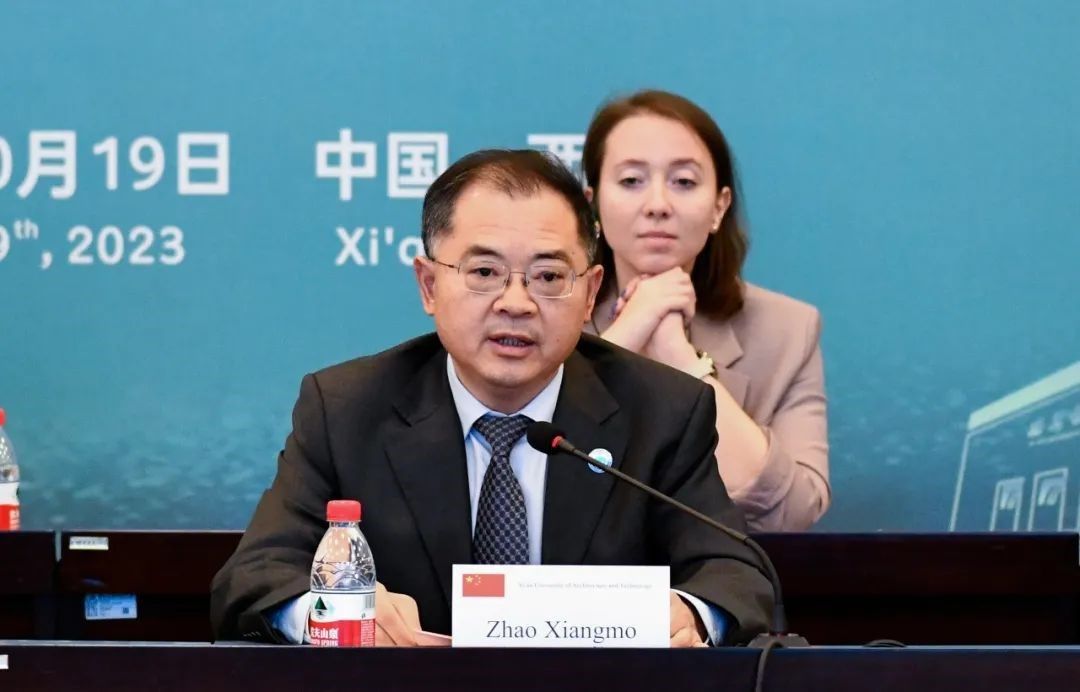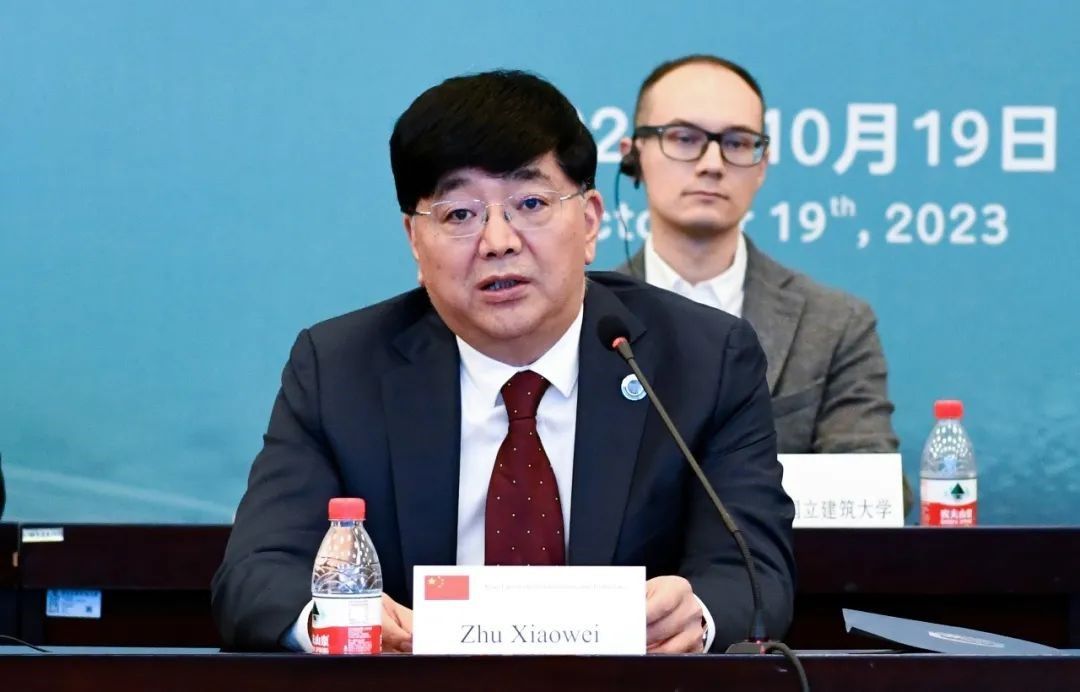On the afternoon of October 19, 2023, the preparatory meeting for the Inauguration of the Silk Road International Alliance of Architectural and Technological Universities (referred to as the "Alliance") was held at XAUAT's Yanta Campus. The meeting was attended by XAUAT's Secretary of CCP Party Committee Zhu Xiaowei, President Zhao Xiangmo, and Vice President Wang Yi, along with 32 representatives from 16 higher institutions of 13 countries along the Silk Road. Notable attendees included Vice Rector Andrei A. Boika from the Sukhoi State Technical University of Gomel, Vice President Tsolmonbaatar Danjkhuu from the Mongolian University of Science and Technology, President Huang Xihuai from Anhui Jianzhu University, President Chen Lei from Jilin Jianzhu University, and Vice President Li Junqi from Beijing University of Civil Engineering and Architecture. The meeting was hosted by Vice President Wang Yi.


President Zhao warmly welcomed the representatives from various universities attending the conference on behalf of XAUAT and its over 40,000 students and faculty. He acknowledged the significant progress made since President Xi Jinping introduced the "Belt and Road Initiative" in 2013, which has garnered global attention and support. President Zhao emphasized the shared challenges and opportunities faced in the current wave of technological revolution, industrial transformation, and international issues like climate change. As a university dedicated to enhancing the quality of life along the Silk Road, XAUAT is responsible for advancing architectural technology innovation, nurturing high-level talent, and preserving and exchanging cultural heritage. With a history spanning over a century, XAUAT has established itself as one of China's leading institutions in architecture, producing more than 300,000 highly competitive graduates and 13 academicians. The university has excelled in research areas such as sustainable construction and energy efficiency, urban planning, cultural heritage preservation, and new urbanization. These achievements have made valuable contributions to talent development, technological advancement, and the creation of improved living environments in architecture.
President Zhao highlighted that XAUAT has proposed the establishment of the "Alliance" in May 2022 to enhance international exchanges and cooperation in the fields of Silk Road architecture. Since the proposal's inception, XAUAT has engaged in 57 meetings with 33 universities; 21 universities have signed a Memorandum of Understanding (MoU). Currently, 44 universities from 23 countries along the Silk Road have confirmed their participation in the "Alliance." President Zhao expressed his enthusiasm to collaborate closely with all participating institutions and contribute to the shared objective of building a more prosperous future.
The SRIAATU Charter and SRIAATU Five-Year Action Plan drafts were announced, and the Xi'an Consensus was signed and released at the conference.

During the meeting, representatives from various Alliance member institutions, including the Sukhoi State Technical University of Gomel, Mongolian University of Science and Technology, Moscow State University of Civil Engineering, Chulalongkorn University, Gdańsk University of Technology, and the University of Chile, shared their thoughts and concerns.

Secretary Zhu extended warm greetings and heartfelt gratitude to all attendees in his closing remarks. He emphasized the transformative nature of the Belt and Road Initiative, which has evolved from a conceptual idea into tangible action, yielding significant achievements over the past decade. Secretary Zhu emphasized the immense significance of the preparatory gathering for establishing the "Alliance" and collaboratively scripting a new chapter in cooperation and exchange. He presented three expectations for the future development of the "Alliance." In the first place, Establishing an academic community of "architectural technology" along the Silk Road. By leveraging resources from architecture-related universities along the Silk Road and considering diverse national contexts, the "knowledge alliance" aims to share knowledge resources, promote knowledge transfer, stimulate theoretical innovation, and address developmental challenges. Cooperative research, joint applications for international research projects, government-level international cooperation initiatives, collaborative academic papers, and the introduction of high-level talent are key strategies to generate, share, and transfer knowledge assets among architecture-related universities along the Silk Road. In another, Cultivate exceptional, innovative skills with a global perspective: Focusing on cutting-edge scientific issues of critical theoretical and technical challenges within architectural technology, discussions and exchanges regarding talent development should be deepened by learning from one another and advocating for reforms in conventional civil engineering talent development models, an exceptional, innovative talent development system can be constructed, elevating the internationalization of talent development and fostering international understanding and identification among young talents from various nations. Lastly, Contribute to establishing a global community with a shared destiny: While contributing to urban and rural development along the Silk Road and enhancing the well-being of people, it is important to uphold common human values, adhere to sustainable development objectives, and champion green development principles. Cooperation within architectural technology can address worldwide challenges such as climate change, ecological environment management, and energy crises. Together, a superior habitat for humanity can be constructed, creating a global community with a shared destiny.
Secretary Zhu expressed XAUAT's eagerness to collaborate with "Alliance" member institutions, fostering an atmosphere characterized by equality, inclusivity, mutual benefit, and vitality. Together, they can craft a remarkable education path along the Silk Road and usher in a new era of architectural technology.